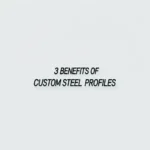The magnetic properties of stainless spring steel depend on its specific grade (alloy composition) and its processing history, particularly cold working.


Here’s a breakdown:
- Austenitic Stainless Steels (e.g., 302, 304, 316):
- In their fully annealed (softened) state, these grades are primarily non-magnetic. Their crystal structure is face-centered cubic (austenite), which is not ferromagnetic.
- However, stainless steel spring wire is made by cold drawing or cold rolling the steel to achieve the high tensile strength needed for springs. This cold working process transforms some of the austenite structure into martensite, which is ferromagnetic.
- Therefore, stainless steel spring wire made from grades like 302, 304, and even 316 (though 316 is generally less susceptible to this transformation than 302/304) will typically become slightly to moderately magnetic. The degree of magnetism increases with the amount of cold work applied.
- Martensitic Stainless Steels (e.g., 410, 420, 440):
- These grades are designed to be hardened by heat treatment, resulting in a body-centered tetragonal (martensite) structure. They are inherently ferromagnetic in almost all conditions. While less common for typical wire springs compared to austenitic or PH grades due to different property balances, if used, they would be magnetic.
- Ferritic Stainless Steels (e.g., 430):
- These grades have a body-centered cubic (ferrite) structure and are also inherently ferromagnetic. They are not typically used for high-performance springs due to lower strength compared to cold-worked austenitic or martensitic grades.
- Precipitation Hardening (PH) Stainless Steels (e.g., 17-7PH, 17-4PH):
- These grades often start with an austenitic or martensitic structure and are then heat-treated to form precipitates that increase strength. Their magnetic properties depend on the specific grade and heat treatment condition. For example, 17-7PH is typically austenitic in the annealed condition (Condition A – slightly magnetic due to ferrite) but becomes strongly magnetic after transformation and hardening treatments (Condition TH1050, RH950, CH900) which develop martensite. 17-4PH is generally magnetic in all conditions.
In summary: Most common stainless steel spring wires (like those made from 302, 304, 316) will exhibit some degree of magnetism due to the cold working required to achieve spring temper. PH stainless steel spring wires like 17-7PH are strongly magnetic in their high-strength conditions. If a truly non-magnetic spring is required, specific alloys or conditions must be chosen carefully, often involving austenitic grades with minimal cold work (which compromises strength) or specialized non-ferrous spring materials.
Is stainless spring steel magnetic? — This article provides a practical buyer‑focused overview with specifications, selection tips, and on‑site considerations. Explore related topics: blog.
Key Specifications and Standards
- Standards: ASTM / EN / JIS (e.g., ASTM A240/A36, EN 10088/10025, JIS G4304/G3131).
- Surface options: 2B, BA, No.4, HL, mirror; galvanized (electro / hot‑dip).
- Processing: hot‑rolled, cold‑rolled, annealed & pickled, welded or seamless.
- Typical services: slitting, shearing, cut‑to‑length, drilling, beveling, deburring.
- Documentation: MTC, CO, packing list with net/gross weight and heat numbers.
Typical Applications
Construction, machinery, automotive, energy, enclosures and fencing, food equipment (for stainless), and general fabrication. Match grade and finish to corrosion, strength, and appearance requirements.
Selection Guide
- Use certified material with Mill Test Certificate (MTC).
- Confirm standards (ASTM/EN/JIS) and tolerances per drawing.
- Match surface finish to application (2B/BA/No.4/galvanized).
- Specify dimensions and acceptable deviation upfront.
- Plan packaging and corrosion protection for transit.
Processing, Packaging and Logistics
We adopt edge protection, waterproof wrapping, rust‑inhibiting paper, fumigated pallets, and strapping suitable for sea freight. Loading photos and weight lists are provided for each shipment.
FAQs
Q: What lead time can I expect?
A: Typically 7–15 days ex‑works for standard sizes; custom processing may extend the schedule.
Q: Can you provide cut‑to‑size service?
A: Yes. We slit, shear, cut, drill, bevel and deburr to drawing to reduce waste and speed installation.
Q: How do you ensure quality?
A: Incoming inspection, process control, and final inspection with traceable heat numbers; third‑party inspection is available.
Q: Do you support small trial orders?
A: We support pilot quantities with consolidated shipping to control cost.
All values are typical and for guidance only; confirm with the datasheet and purchase order before production.
Related products: view details.
Related products: view details.





